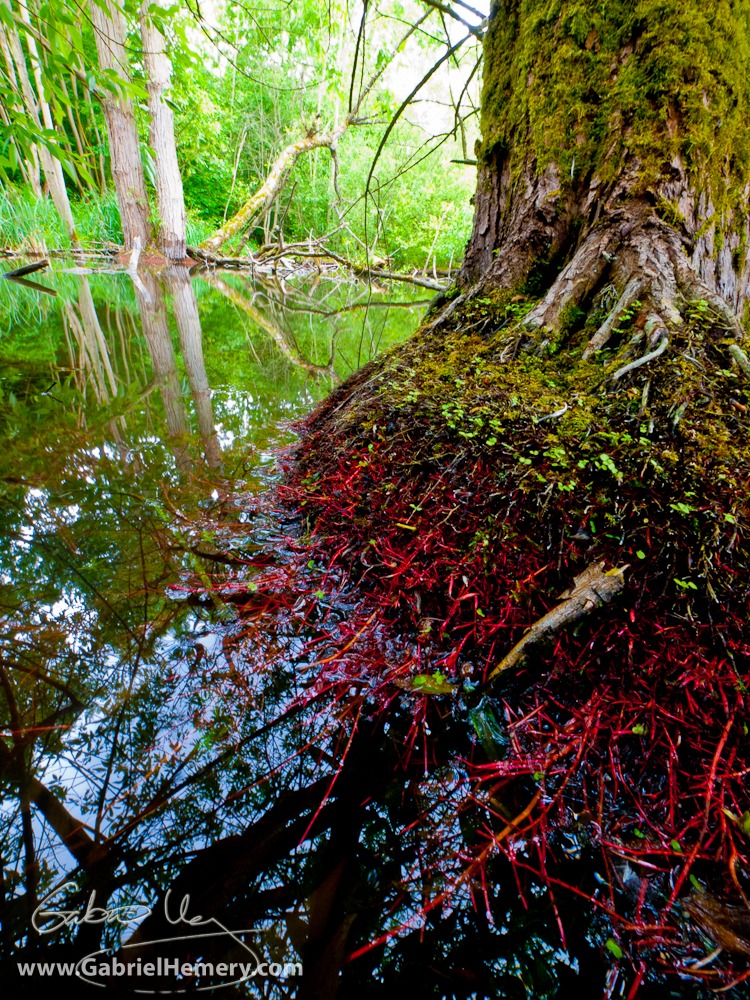
Deep within an English woodland, while the distant bark of a roe deer echoed between the hazel coppice stools, the nearby sounds of a calling coot led to me to water and a hidden woodland pond. As I explored the fringes of the carr woodland I came across these luminescent red willow roots extending from the tree’s mossy stem into the dark water.
Gabriel Hemery
 This work is licensed under a Creative Commons Attribution- NonCommercial- NoDerivs 3.0 United States License.
This work is licensed under a Creative Commons Attribution- NonCommercial- NoDerivs 3.0 United States License.

Yes Kevin – I’ve often wondered too. I have done a little research and found an interesting discussion on the web: http://watershed.ucdavis.edu/tuolumne/includes/uploads/062709073409-26-Pinkroots.pdf
It is worth reading in full but the key section essentially explains that there is a protein called leghemoglobin that is associated with nitrogen-fixing nodules on aquatic roots and which is tinted red. The plants have a symbiotic relationship ith bacteria living within those nodules that use an enzyme called nitrogenase to convert nitrogen in the water to the kind that plants can use. Apparently, nitrogenase works best under low oxygen conditions. By producing leghemoglobin in the root nodules where symbiotic bacteria live, the riparian trees are able to bind oxygen molecules, and create the low oxygen environment ideal for their symbiotic buddies.
The source is not peer-reviewed but, as you say, the subject is worth exploring a little more. Another one to add to the list!
I have seen this effect before in other streams. The most recent was in the stream that flows around the North end of Brook Meadow Nature Reserve in Emsworth in Hampshire, right alongside the railway line. The trees were Willows as well.
Is it just specific to these trees or do other tree species respond the same way to exposure to open water? I also suspect that the colouration may be their natural colour which we don’t see because of them being underground normally.